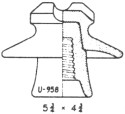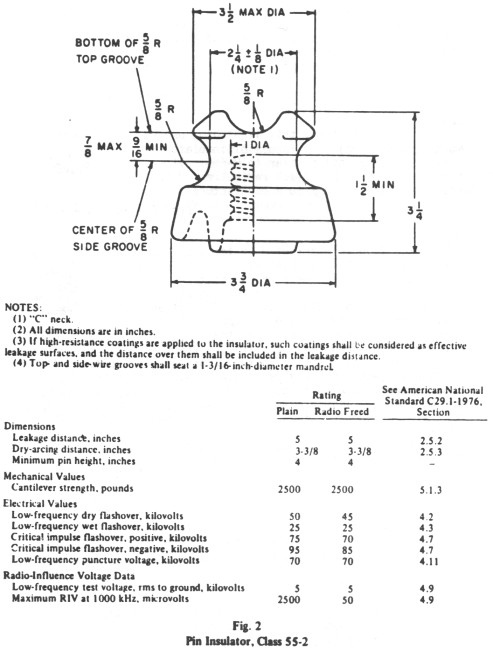Porcelain Insulator News
by Elton Gish, NIA #41
Reprinted from "INSULATORS - Crown Jewels of the Wire", December 1984, page 24
Gerald Brown's death on September 16 was a great loss to all of us. He was a
pioneer in insulator collecting and a real cornerstone to porcelain collectors.
He left a legacy of many books on porcelain insulators reflecting his years of
dedication to improve the hobby. We will always carry memories of Gerald for his
friendship, achievements and contributions to the insulator hobby.

Dear Elton:
Sometime back I found in a remote area an old glazeweld insulator
similar to U-958 except it has segmented threads, as do some of the Bostons I
have. I have looked for others without any luck. A few U-958's remain in
service, but I have not found any more of them with segmented threads. Are these
insulators very common?
Robert Chiantelli
- - - - - - - - - -
Dear Robert,
Past references to segmented threads can be found in the
September Index to the Porcelain Column -- namely: 12-72-11, 4-77-23 and 7-77-27.
Evidently these units were made to be used as "switch and bus"
insulators where they are cemented onto similarly keyed pins. This prevented any
chance of the insulator rotating on the pin. The positioning of insulators used
in these applications must be firm and permanent.
It is obvious that the
insulator was first threaded normally, and then a threaded mandrel with raised
splines was pushed into the threaded hole to create the longitudinal grooves in
the threads.
Segmented threads can be found on U-431, U-432, U-432A and most
notably on U-958. It was most evident from specimens that Thomas was involved in
this, and specimens were found in the old Thomas plant dump at Lisbon, Ohio.
Some specimens are obviously of Pittsburg manufacture.
Incidentally, there are a
whole bunch of cemented two-piece units of this same general style which may or
may not come with segmented threads. The one-piece style does commonly come with segmented
threads, maybe more often than not. There are so many
near-alike versions of the same general style that it got tiring to make
drawings of all of them to include in the chart with individual U-numbers.
Elton

Dear Elton,
I recently found this light blue underglaze marking (above) on
a couple of insulators. The marking is on a unit similar to U-666. It has a
skyglaze color with a black radio-treated top. Can you attribute this logo to a
manufacturer?
Fred Collier, NIA #2933
- - - - - - - - - -

Dear Fred,
The logo is attributed to the A.B. Chance Co., a subsidiary of
Emerson Electric Co. The number inside the "C" is the year of manufacture.
I have a U-488 with the marking at right. The 55-2 is an ANSI class number. ANSI
is an abbreviation for American National Standards Institute. Each ANSI class
number indicates that the insulator meets ANSI standards for dimensions,
electrical properties, etc.
This simplifies the design of projects. A company designs a project requiring particular ANSI class units, and that company, or
a contractor bidding on that project, may use the most competitively priced
insulator from either Lapp, Chance or any other company producing insulators
meeting that ANSI class.
As an example, a copy of ANSI class 55-2 specifications
is reproduced on the following page.
Elton

Large Image (160 Kb)
| 